Last updated on March 24th, 2022
Our site is reader supported, this means we may earn a small commission from Amazon and other affiliates when you buy through links on our site.
Blueberries are incredibly healthy for you and, relatively simple to care for. When it comes to growing blueberries the requirements are easy. Keep the soil moist, plant in acidic soil or ericaceous compost if growing in pots and in full sun, although it’s worth noting that they will tolerate shade. Finally prune every year by around one third, preferably in March. To learn more and dig deep into the detail, read on.
Watering blueberries
Always keep the compost or the soil moist but never leave it soaking. On the other end of the spectrum never let it dry out in between waterings. Ideally, the soil wants to be kept moist, especially over summer whilst the berries are forming. It’s also worth noting that they should be watered with rainwater because tap water is not ideal unless you have absolutely have no choice, such as when there is a drought. This means getting water butts set up and collecting rainwater from any roofs you can.
Plant in acidic soil or ericaceous compost if growing in containers
As mentioned, if you can help it, water your blueberries with rainwater rather than tap water. Blueberries prefer highly acidic soil and if you use tap water it can change the pH balance which can cause your blueberries to throw a bit of a tantrum. In order to avoid problems in this area, it’s recommended that you keep the soil pH level at 5.5 or lower. This is something you can check not only in the spring but a few times throughout the year if you feel inclined. If you have to lower the pH level of your soil you can always add some ericaceous compost or dig in some mulch made from pine needles and bark.
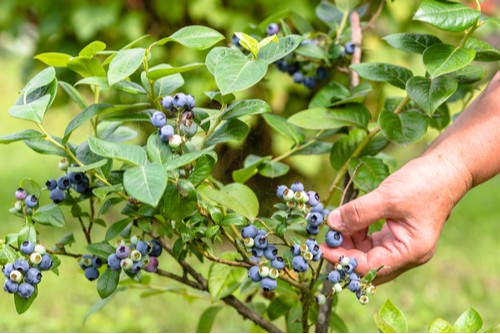
Growing blueberries in containers usually circumvent this problem because you can plant them in ericaceous compost and feed them with an acidic feed.
Learn more about growing blueberries in containers in our guide by clicking here
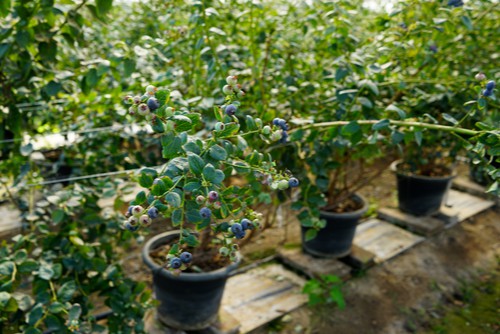
Feeding blueberries
In terms of feeding, an annual application of fertiliser to keep the pH levels at optimum conditions is best and more important for container-grown plants. Blueberries are not very hungry plants so you don’t have to feed them more than once a year. In fact, they are quite sensitive to overfeeding. Make sure you use an ericaceous feed for lime hating plants often marketed to Hydrangeas, Rhododendrons and Azaleas as they also need acidic feeds.
Pruning
Blueberry bushes grow with branches that shoot upwards and canes that grow out from these branches. It is on these that the buds produce flowers and subsequently berries. They are grown on old wood. The best berries are grown on canes that are around 3 years old. But this also means that you need to prune regularly to get rid of canes that are 5-6 years old, in order to make way for new development.
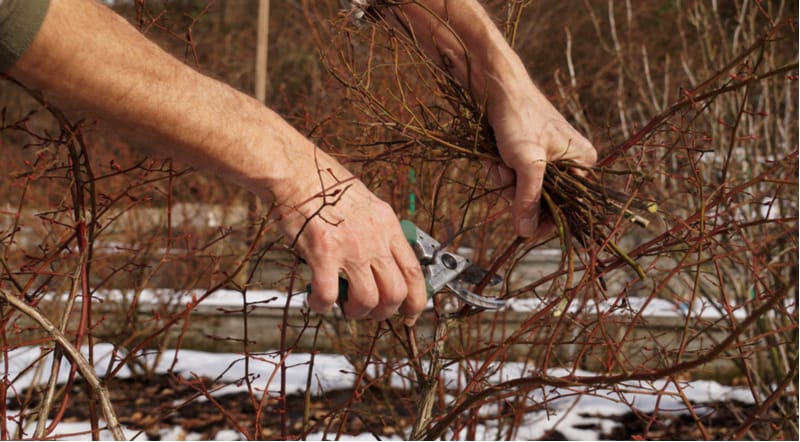
It’s recommended that you remove about one-third of the older wood every year to optimise productivity. You shouldn’t have to do this the first two or three years you have the plant, it’s only something you have to start doing with more mature blueberry bushes. When you prune try to do it at the beginning of March.
To learn more about pruning blueberries in much more detail see our guide here
Winter protection
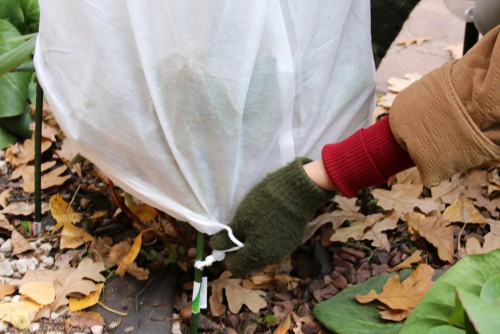
Blueberries need protection against very severe winters, so if you live in the Northern parts of the country you might need to put some fleece around it to protect it against frost and add a layer of mulch around the base of plants.
Blueblueberries grown in containers should be wrapped in bubble wrap around the pot and fleece around the top half.
How to plant blueberries
You can plant blueberries directly in the ground or in a container. No matter where you plant them you want to make sure that the soil meets the acidic requirements listed above. You can test the soil pH level with a home kit before you plant so that any adjustments to the soil can be made.
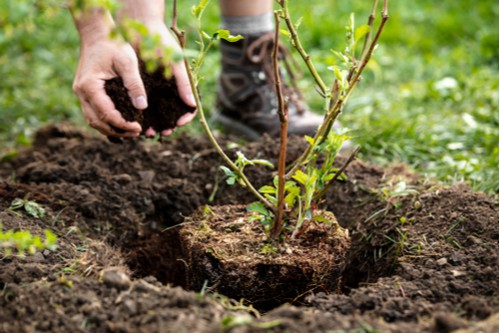
If you are growing blueberries in a container you can simply pick more acidic compost mixtures and fertilisers known as ericaceous compost and feeds. The container should be at least 30cm in diameter for a brand new blueberry plant and once it gets larger, between 50cm and 60cm wide.
Plant in well-drained but moist soil in a sunny position
Blueberries need well-drained, acidic soil and they prefer light soil over heavier soil so if you have heavy soil, consider mixing in plenty of organic matter and compost with grit to improve the soil structure. They also need a lot of sun so find a place in your garden that is sheltered but sunny. Failing this, they will grow happily in a more shady location but they won’t fruit as well.
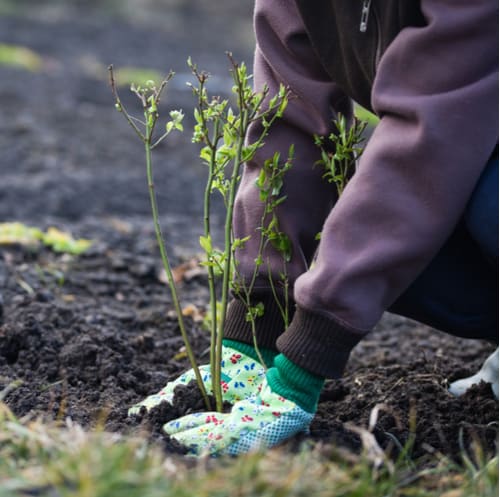
Problems
The most common problem you will face is a bird. Birds, particularly pigeons, will try to eat the buds, the leaves, the fruits, and everything in between. You can cover your blueberry bushes with netting or fleece, or include things like scarecrows. Keep your eyes peeled for aphids. You will see these on the tips of the plant or the leaves. You can remove them by spraying them with water, or applying commercial pesticide but make sure it’s suitable for fruit and double-check how long you can eat from the bush after spraying.
Picking the Fruit
Once your fruit is ripe, from the middle of summer onwards, you will notice the colour change from green to the quintessential blue of blueberries. You can pick them as soon as the individual fruits ripen, and this will give you ample fruit throughout the season. Once you have picked them you can eat them fresh, dry them, freeze them, use them in cooking or make them into preserves.
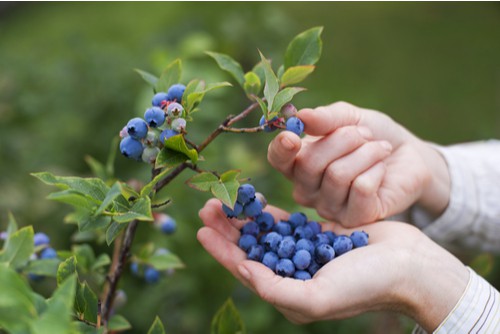
Different varieties of blueberries can fruit at different times and produce different sized fruit so it’s well worth shopping around and considering a few varieties. They also fruit better when planted in groups of two or more.


